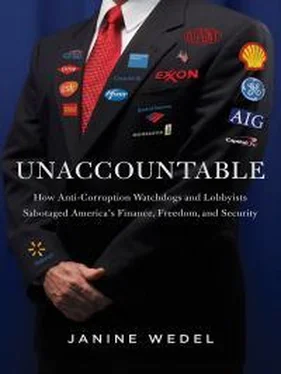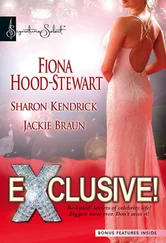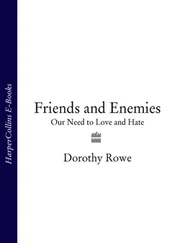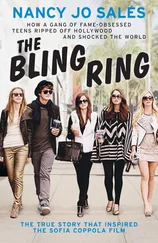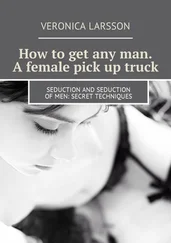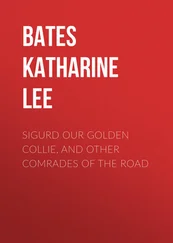Possibly wary of public backlash, publicly traded corporations have been less than eager to join in the outside spending game—at least openly. Perhaps aware that corporate spending on elections plays poorly with voters, only a handful of such corporations have made contributions to super PACs, including Chevron and Scotts Miracle-Gro. Privately held businesses, however, have not been so restrained; companies like Oxbow Carbon and Contran Corporation, which made direct contributions from their treasuries to conservative super PACs, were among 2012’s biggest sources of outside money.
This is surely a sign of the value of invisibility in political contributing these days.
In Stealth We Stand
The operative word, of course, is directly .
Rather than exert influence openly, even when it is completely legal to do so, corporations and individual donors with deep pockets are apparently choosing to channel influence anonymously through 501(c)(4) groups. As one watchdog suggested, there actually is something worse than buying elections: it’s when you don’t even know who’s buying the election. 46
OpenSecrets.org assesses that Citizens United spawned nonprofit “dark money groups” that don’t list their donors. It estimates that “Partly as a result [of the ruling], spending by organizations that do not disclose their donors has increased from less than $5.2 million in 2006 to well over $300 million in the 2012 election.” 47Who are these donors? “[H]ow much of that money came from corporate treasuries is unknown.” 48
Not only is their existence funded by we-don’t-know-whom; these groups (as we saw above with the “grassroots” groups) declare that their primary purpose is the “promotion of social welfare,” not partisan politics, and therefore they don’t need to reveal their funding sources. The groups themselves, in shadow-elite fashion, add another layer of obfuscation with vague names that give no hint of politics or provenance.
The Koch brothers’ group Americans for Prosperity and Crossroads GPS, brainchild of Republican strategist Karl Rove, are but two examples. The GPS in Crossroads GPS stands for “Grassroots Policy Strategies.” That’s right. “Grassroots Policy Strategies.” The 65,000-odd people getting regular updates from Crossroads GPS’s Facebook page are told that the group is a 49
. . . policy and grassroots advocacy organization committed to educating, equipping and mobilizing citizens to take action on the critical issues that will shape our nation’s future.
From this description, you wouldn’t know that Crossroads, along with sister organization American Crossroads (a 527 organization), became so influential during the 2012 election cycle that it was dubbed the Shadow RNC. 50
Savvy political operators often pair a 527, which can now take unlimited donations but has to disclose its donors, with a sister 501(c)(4), which is subject to more restriction but has the huge advantage of nondisclosure. If all this sounds confusing, that is perhaps the point. Americans for Prosperity has nearly a million Facebook “likes” and many more state-affiliated Facebook pages with thousands of other “likes.” There’s no indication to its “friends” that the organization is one of many supported by the Koch brothers, whose business empire would stand to benefit from its anti-regulatory platform. 51
In 2014, the Washington Post , along with the Center for Responsive Politics, provided a graphic of Koch-connected nonprofits and assorted “entities,” which spent a whopping $400 million in 2012. They outspent the Shadow RNC and just about matched all the money raised by American unions, the voting and fundraising stronghold for Democrats. 52
The Koch brothers are well known, having become a favorite whipping boy of the American left. But their nonprofit consortium involves quite a few other rich, like-minded donors whose names we would probably not recognize. And, of course, they’d like to keep it that way. 53
Off-record donors enjoy influence with impunity. A controversial policy decision might be made, and the public would have no idea what questions to ask or even if they should ask them in the first place. Both the donor and the politician enjoy the benefits of deniability that come with anonymity. In short, information that not long ago was public is now firmly in a few private hands.
What do these 501(c)(4)s actually do? Aside from flooding the airwaves with thinly veiled attacks on political candidates under the guise of “issues,” some of them engage in “dirty tricks,” digital-style. In the process, the groups can deny both their partisan nature and their sponsors. And get away with it.
These “dirty tricks,” or techniques, evolve along with the technology, creating new means of obfuscating the source of influence. Just to show how difficult such influence is to trace: it took two computer scientists at Wellesley College to identify a “Twitter bomb” tossed at Democrat Martha Coakley during her failed 2010 U.S. Senate run in Massachusetts. 54They traced it to a low-profile group in Iowa, a 501(c)(4) nonprofit. That group, called the American Future Fund, was bankrolled by the Center to Protect Patient Rights, both of which can be found on the Koch influence graphic mentioned above. 55This little-known group, which spent nearly $24 million in the 2012 election cycle, was outspent, as far as 501(c)(4)s go, only by Rove’s Crossroads GPS. 56
In sum, this au courant means of influence has double-blindness, disconnect, and deniability wrapped into it. We don’t know who the sponsors are. The generic-, optimistic-, and often patriotic-sounding names of the groups provide few clues.
And we can only surmise the existence of a relationship between the donors and the politicians; we can’t know for sure. For, to be legal, the relationship must be nonexistent—never mind that no one believes this.
In short, there is deniability at each level with each relationship: politicians can deny a tie to a group and its donors; and donors can deny funding it.
The double-blind means of organizing influence appears, in a few short years, already to have become a fixture of American politics. For their part, Koch-allied outside groups are going large again in 2014. The New York Times reports that they are “spending up to 10 times as much as any major outside Democratic group so far.” Their goal is to harness discontent with Obamacare and to translate that into a lasting distaste for “big government” of any kind. 57
Organizing (and Re-Organizing) for America
The ideological goals of the Obama camp may be 180 degrees afield from the Koch brothers and their ilk, but the means of organizing influence is not. A pillar of top-down organizing from Obama’s presidential beginnings has been OFA, originally Obama for America. Most recently, this novel organization decided in 2013 to become . . . you guessed it . . . a 501(c)(4). More on this latest incarnation shortly.
OFA has always proven to be eminently adaptable—changing its name (though not its acronym—that’s the brand) with the circumstances and morphing from one mission to the next. But its unwavering constants are acting as the arm of the president and being a “grassroots” entity controlled from the top. This enduring, yet mutating, group relies on direct messaging and cutting out all manner of middlemen—be they journalists, political parties, or Congress.
As of this writing, OFA is on its third name. During the 2008 campaign, it was Obama for America, a campaign-organizing group that amassed an e-mail list of around 13 million people (now up to a reported 17 million), described in the Washington Post around that time by a Republican strategist as “no better asset in politics today”: a direct, 24/7 digital communication line. 58
Читать дальше
